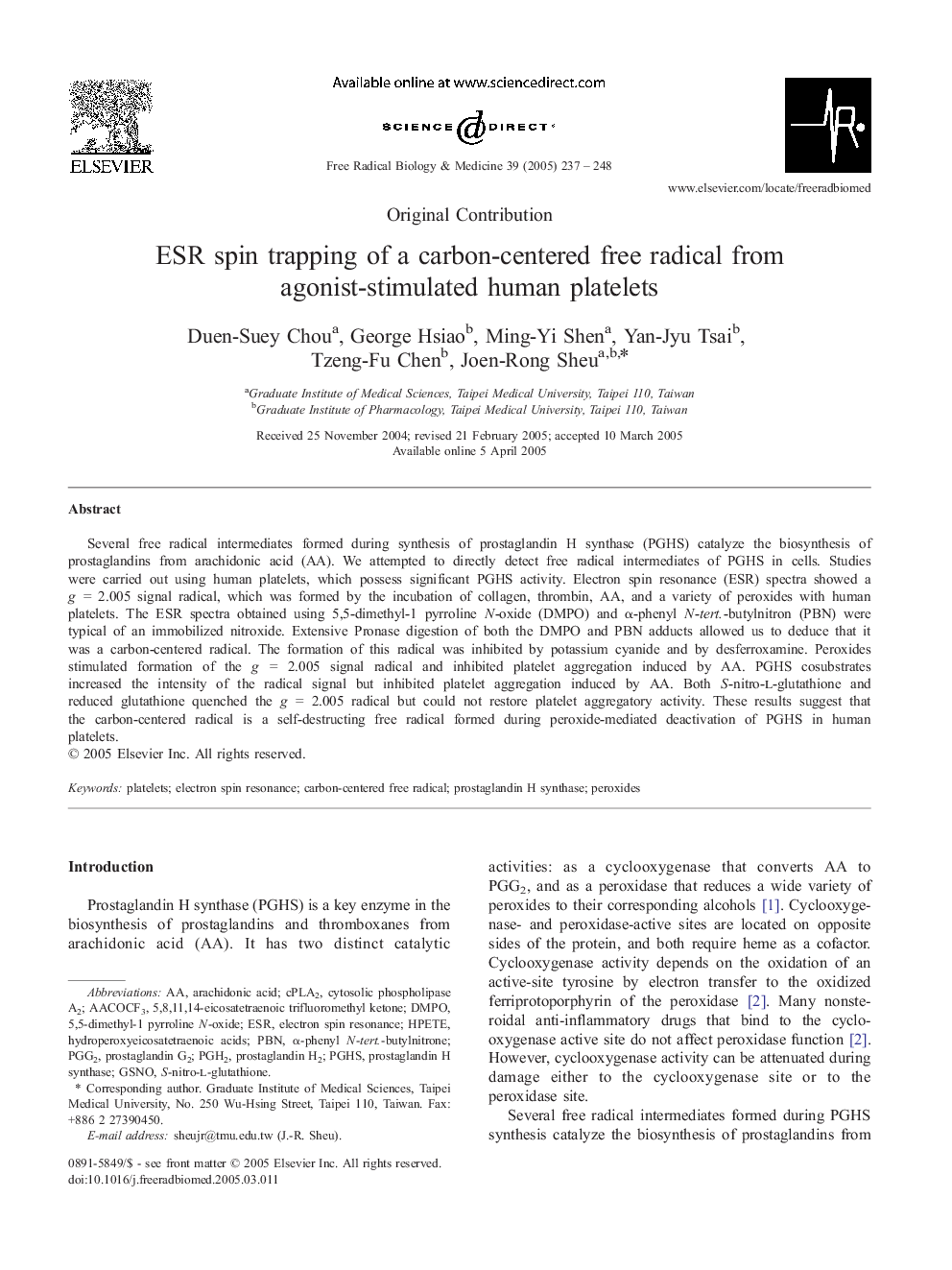| Article ID | Journal | Published Year | Pages | File Type |
|---|---|---|---|---|
| 10739354 | Free Radical Biology and Medicine | 2005 | 12 Pages |
Abstract
Several free radical intermediates formed during synthesis of prostaglandin H synthase (PGHS) catalyze the biosynthesis of prostaglandins from arachidonic acid (AA). We attempted to directly detect free radical intermediates of PGHS in cells. Studies were carried out using human platelets, which possess significant PGHS activity. Electron spin resonance (ESR) spectra showed a g = 2.005 signal radical, which was formed by the incubation of collagen, thrombin, AA, and a variety of peroxides with human platelets. The ESR spectra obtained using 5,5-dimethyl-1 pyrroline N-oxide (DMPO) and α-phenyl N-tert.-butylnitron (PBN) were typical of an immobilized nitroxide. Extensive Pronase digestion of both the DMPO and PBN adducts allowed us to deduce that it was a carbon-centered radical. The formation of this radical was inhibited by potassium cyanide and by desferroxamine. Peroxides stimulated formation of the g = 2.005 signal radical and inhibited platelet aggregation induced by AA. PGHS cosubstrates increased the intensity of the radical signal but inhibited platelet aggregation induced by AA. Both S-nitro-L-glutathione and reduced glutathione quenched the g = 2.005 radical but could not restore platelet aggregatory activity. These results suggest that the carbon-centered radical is a self-destructing free radical formed during peroxide-mediated deactivation of PGHS in human platelets.
Keywords
Related Topics
Life Sciences
Biochemistry, Genetics and Molecular Biology
Ageing
Authors
Duen-Suey Chou, George Hsiao, Ming-Yi Shen, Yan-Jyu Tsai, Tzeng-Fu Chen, Joen-Rong Sheu,
